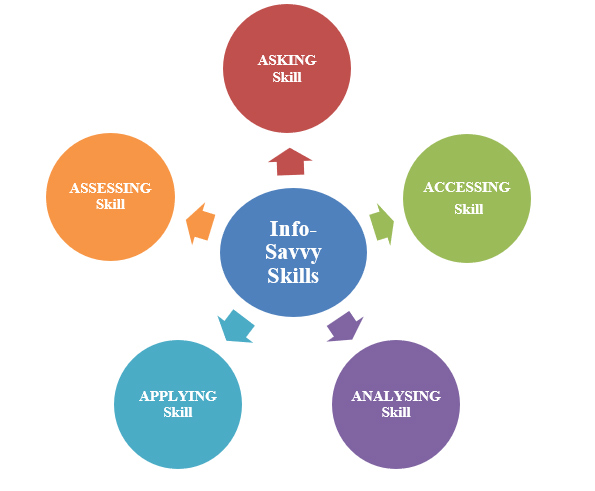The word ‘Covid-19’ created a history in human civilization. Everywhere in the world is its presence and its effect has shocked the mankind. Everything now has been disturbed from its track so also the Educational system. So keeping in view of this, Educators and the policy makers now think about the alternative ways of teaching and learning process. This alternative ways implies teaching through different web based apps. Various web based apps are now coming to help the teachers to continue their teaching. Ubiquitous Learning Environment (ULE) is one of them. This environment uses various ubiquitous devices i.e. Web Pads, Tablets, Personal Digital Assistants (PDAs) and Smart Phones.
As, there is no concrete definition of u-learning due to speedy changes of learning environment, so researches gave their views in defining the term “u-learning”. A common definition of this learning is ‘anywhere and anytime learning”. One of the unique features of ULE is that it is very learner friendly. This learning environment is based on ubiquitous technology. The most noteworthy role of ubiquitous computing technology in this learning is to create a ubiquitous learning environment, which enables anyone to learn at any place at anytime.
Ubiquitous computing in education is both teacher and student whenever and where ever requires can access the teaching learning system. In this modern world of ULE teaching learning process is not restricted to any particular day or time rather it can be accessible at any time as per the need of the student. Both teacher and student will decide where to study and when to study. Ubiquitous computing comprises of the technologies human computer interaction, wireless sensor networks, context-based computing, mobile computing, cloud computing, artificial intelligence, distributed computing, natural user interface, physical computing, virtual reality etc.
Ubiquitous Computing can be described as a new arena of Information and Communication Technologies. The term “Ubiquitous Computing” was coined by Computer Scientist Mark Weiser. He described this system as a calm technology that recedes into the background of our lives. According to him, People and Environment with the help of various computational technologies can exchange anything at anytime from anywhere.
A student is learning, when he is acquiring knowledge through interaction and through active participation and through only passive recipient. Therefore, ‘learning by doing’ (Schank, 1995) is the best way for learning. Learning by doing teaches implicitly rather than explicitly but things that are learned implicitly need only be experienced in the proper way at the proper time. Thus, we need to allow students to be in an environment that is useful to their interests. However, this way of learning is difficult to apply without having a proper methodology to obtain learning information from the real situations. With the advancement and deployment of ubiquitous computing technologies, the process of learning from the environment becomes easier. This is when the technology allows the process of information sharing and communication to happen naturally, constantly and continuously throughout the day. In addition, it is also suggested that the computers used by the student would be able to supply students with information and relevant services when they need it, by automatically sensing the context data and smartly generating what is required (Cheng & Marsic, 2002).
Ubiquitous learning is also known as Context-aware Ubiquitous Learning because fast and speedy growth of wireless communication, sensing, and mobile technologies has facilitated the students to learn in such an environment that merges learning materials from both Real and Digital World. Ubiquitous Learning integrates high mobility into the learning environment. The communication between various types of ubiquitous devices and embedded computers in the environment allows learner to learn while they are moving.
Some of the features of this learning are –
- Permanency: The information remains until the learners purposely eliminate it.
- Accessibility: The information is always available whenever the learners need to apply it.
- Immediacy: The information can be retrieved immediately by the learners whenever needed.
- Interactivity: The learners can interact with peers, teachers, and experts efficiently and effectively through various types of media.
- Context-awareness: The environment can adjust to the learners’ actual situation to offer sufficient information.
There are several advantages inherent in ubiquitous learning like –
- It helps learners to enhance desirable learning outcomes.
- It helps learners to improve literacy and numeric skills.
- It assists learners to acknowledge their existing content based abilities
- It can be used for independent and collaborative learning experiences
- It helps learners to identify where they need assistance and support to overcome the situation
- It helps to beat the digital divide
- It helps to make learning informal
- It helps learners to be more focused for longer periods
Conclusion:
Ubiquitous learning environment although is a new concept but acts as an integral part of teaching learning process especially at the time of crisis when one cannot have the access to go to attend the formal educational institution . It is a great support to the mainstream education. It requires some kind of expertise in the field of technology but everybody in today’s time should have that much of knowledge to continue through it. Hence it can be concluded that Ubiquitous learning environment is a new ray of hope and aspiration in present era of teaching learning process and everybody should accumulate it.
References:
Cheng, L. & Marsic, I. (2002). Piecewise Network Awareness Service for Wireless/Mobile Pervasive Computing. Mobile Networks and Applications (MONET), vol.17, no.4, pp.269- 278.
Schank, C. (1995). What We Learn When We Learn by Doing. Technical Report No. 60, Northwestern University, Institute for Learning Sciences. Retrieved on March 2, 2009 from http://cogprints.org/637/0/LearnbyDoing_Schank.html
Weiser, M. (1991). The computer of the 21st century. Scientific American, vol.265, no.3, pp.66-75.









